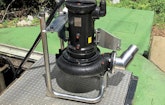Suck it up, pressurize it and send it to the treatment plant.
In theory, this should be a straightforward job for pumps at a lift station. However, as we all know, the curse of so-called “flushable” products in our sewer systems is also proving that some so-called...









